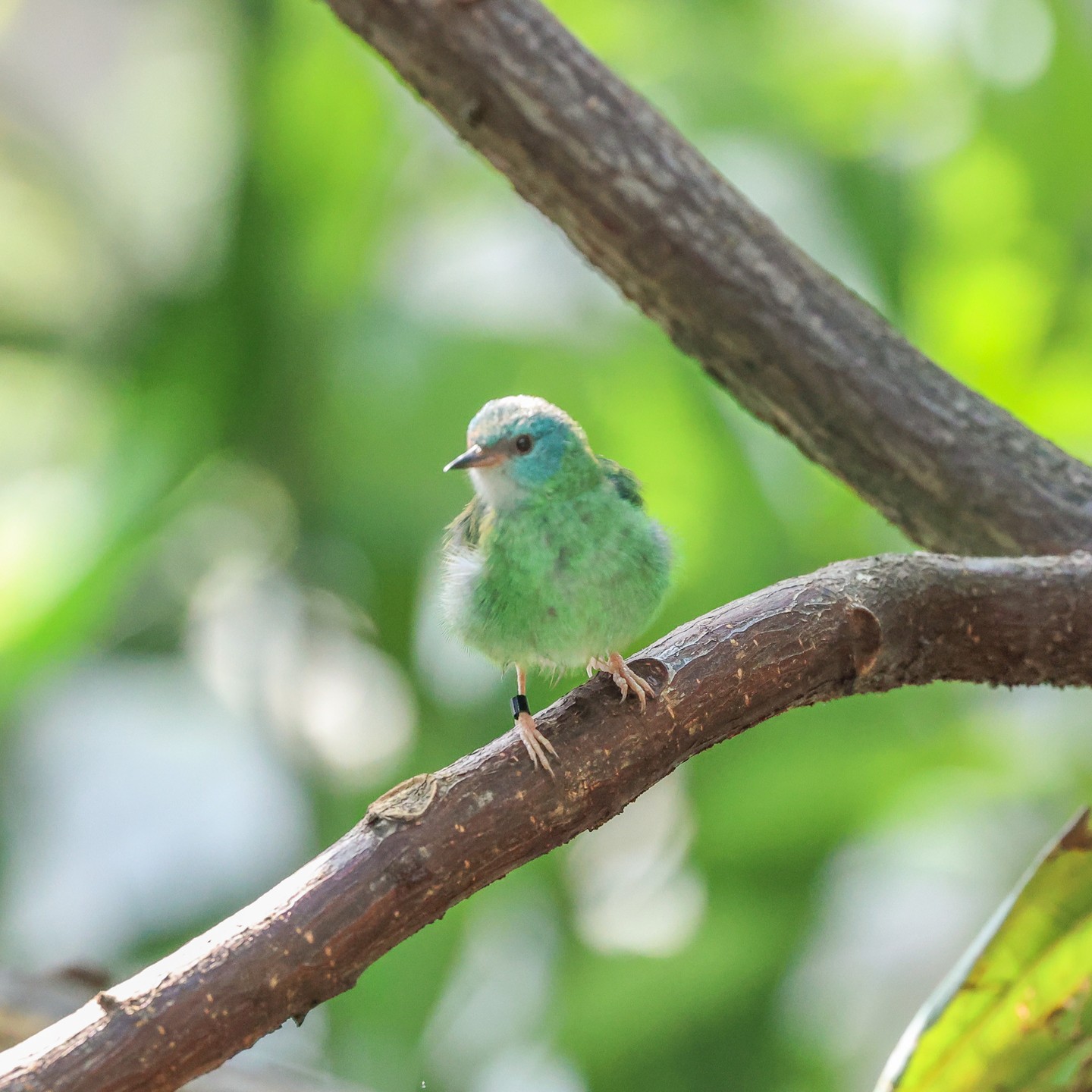- Exploring the intriguing biology and behavior of the blue dacnis and wood thrush.
- Understanding the roles of avian species in their natural habitats, focusing on their ecological significance.
- Insights into the conservation efforts and challenges faced by zoo management and wildlife conservatories.
- Evaluating the educational impact of aviaries like the Unseen New World in fostering public awareness and interest in bird conservation.
- Discussing the adaptation and welfare programs designed for integrating new aviary arrivals.
The Unseen New World aviary is now home to captivating new residents: a female blue dacnis and a male wood thrush. These freshly arrived birds are more than just additions to a beautifully orchestrated habitat. They represent significant examples of biodiversity and offer audiences a unique learning experience about avian life. The blue dacnis, a small tropical tanager, and the wood thrush are excellent subjects to explore the larger topics of biology, conservation, and species management.
The blue dacnis is a small-sized bird from the tanager family, native primarily to South and Central America. Its vivid blue and black feathers render it a striking sight in any habitat. The energetic nature of the blue dacnis is noteworthy, as it actively participates in seed dispersal, playing a crucial role in maintaining forest plant diversity. The species frequently feeds on fruits, nectar, and insects, enabling it to thrive in diverse environments ranging from lowland forests to edge habitats.
In contrast, the wood thrush is known for its hauntingly melodic song that resonates through forests in North America. This bird migrates to Central America during the colder months, highlighting its adaptability to various climates and environments. Its rich, flute-like song is not just a treat for the ears but serves vital functions in communication and mate selection. The speckled chest of the wood thrush helps it camouflage in forest habitats, which is crucial for avoiding predators.
Both species offer invaluable insight into ecological dynamics. As a frugivore and insectivore, the blue dacnis impacts vegetation through seed dispersal and pest control. Its existence underscores the importance of interconnected life cycles within ecosystems. The wood thrush similarly contributes to its environment by controlling insect populations and enriching the acoustic biodiversity of its habitat with its rich vocalizations.
In the broader context of conservation, the incorporation of these birds into the aviary provides a fascinating case study. Aviaries play a critical role in ex-situ conservation—preserving species outside their natural environments. By nurturing these birds in controlled settings, zoos can contribute to the study and preservation of avian species that may face threats in their natural habitats. This involves addressing challenges such as habitat destruction, climate change, and human interference.
Zoo management teams work diligently to create optimal living conditions that meet the physical and psychological needs of such birds, promoting their health and welfare. The Unseen New World aviary is designed to mimic natural habitats, integrating elements like foliage, perching structures, and water features—vital for bathing and hydration. This enhances the holistic well-being of the birds and aids in the display of natural behaviors, enriching the experience for visitors and providing educational value.
The presence of diverse bird species in aviaries offers significant educational benefits. It aids in increasing public awareness of wildlife conservation issues. Visitors gain firsthand insights into the behaviors, habits, and interaction of birds like the blue dacnis and wood thrush. Educational programs and guided tours further enhance understanding, encouraging support for conservation initiatives.
Aviaries like Unseen New World work tirelessly to advance breeding programs and species recovery plans. For the new arrivals, these programs create a framework for long-term viability and genetic diversity. Zoo conservationists collaborate with global organizations to adhere to guidelines that prevent genetic bottlenecks and promote healthy population growth. These conservation efforts are vital for the survival of many species and serve to educate the public about the complexities and challenges of wildlife conservation.
In conclusion, the arrival of the blue dacnis and wood thrush at the Unseen New World aviary breathes life into the space both visually and audibly. They symbolize the intricate balance of nature and the role humans play in conservation. Through thoughtful zoo management and engaging educational programs, visitors can develop a profound understanding of the avian world and its conservation significance.
*****
Source Description
Flock to the Aviary in Unseen New World and spot our newest arrivals – a female blue dacnis and a male wood thrush! 🐦
The blue dacnis, a small tropical tanager, is easily recognizable with its bright feathers and energetic nature. The wood thrush is known for its rich, flute-like song and speckled chest, blending perfectly into forest habitats.


